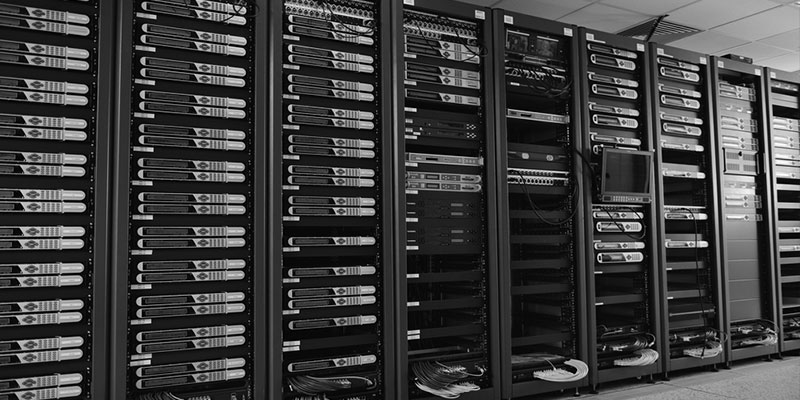If you know anything about the ‘bare-metal server’ it’s probably the general acceptance that they offer better performance outcomes than any other network hosting option. It’s certainly a big call, but not an unfounded one.
To ensure optimal results, however, you’ll need to make sure your bare-metal server is being managed in the most appropriate way to support your distinct business operations.
But first, what exactly is a bare-metal server?
Essentially, a bare-metal server is a physical, on-site computer server used by a single business. They are enterprise-grade, rack-mounted, and fitted with an abundance of industry-leading technological components.
And what are the advantages?
A bare-metal solution provides a highly stable and durable environment, with its biggest advantage undoubtedly being the ability to offer services without interruption.
The high performance and overall reliability of the bare-metal server is largely down to its single tenant status. This stands in contrast to shared or virtual server options, which support multiple users and therefore divide their computational power between them. As a result, they can become overloaded.
Server overload means latency issues and slow speeds, both of which can impact negatively on productivity and customer experience. With a bare-metal alternative you get unfettered access to your processor, storage and memory, without having to worry about the impact of other users.
Additional benefits include direct access to the server itself and unparalleled levels of control, the ability to easily process large volumes of data, and the opportunity to leverage the underlying hardware architecture, meaning you can customise and install any software or security measure that will help meet your specific requirements.
And while bare-metal sever options come with a higher price-tag than their alternatives, they have actually been found to offer the best price to performance ratio!
What’s more, it’s becoming increasingly possible to add elements of the cloud alongside your physical server, resulting in bare-metal cloud servers that offer many of the additional scalability, flexibility, innovation and support benefits a virtualised solution can bring.
Isn’t that exactly the same as a traditional dedicated server?
You would certainly be forgiven for wondering how a bare-metal option and traditional dedicated server solution differ. The two are definitely similar, but not synonymous. For a start, bare-metal servers tend to have more advanced hardware and storage technologies than dedicated alternatives.
Traditionally, dedicated servers have been associated with long set-up times. Conversely, providers specialising in bare-metal solutions tend to use a model that’s more reminiscent of the cloud, which allows for provisioning in a matter of hours, or even minutes.
Do businesses need specialist technical expertise in-house to manage a bare-metal server?
Many businesses assume the effective management of a bare-metal server will demand niche expertise in-house. While your team may well have the ability to handle certain aspects of this type of server management, other elements do require some pretty technical knowledge.
An overwhelming number of organisations are negating the need for comprehensive in-house expertise, with a collocated solution. This normally takes the form of a rented server, housed in an expertly-managed data center, strategically located in relative proximity to your business premises.
When choosing a managed bare-metal service provider, it’s important to pay attention to the number of geographically diverse data centres they operate in your region. More data centres in the network equals added resilience, thanks to the ability for one location to support another in the event of an outage.
In addition to simply leasing your equipment and providing a secure location in which it can be housed, your provider will offer a range of management services. Which of these you hand over to them and which you retain in house will depend on the nature of your business and the level of expertise amongst your team.
Outsourcing aspects of your server management will help streamline your operations, and give you more time to focus on the running and growing of your business.
As a general guide, between yourself and your outsourced service provider you should make sure you have the following covered:
General management
Somebody obviously needs to take responsibility for the many day-to-day tasks that contribute towards the effective management of a bare-metal server, including data migration, timely hardware replacement and regular backups.
Most enterprise-grade service providers will give you access to a user-friendly, secure web-based portal, to help remotely manage any of the server responsibilities you choose to retain in-house. This portal will offer valuable insights into your operations and the ability to effortlessly scale your operations.
Alongside this, your provider should give access to application programming interfaces (or APIs), in support of software development. Remote hands, meanwhile, will enable any tasks relating to your physical hardware to be conducted on-site by your provider’s technicians.
Monitoring
Ongoing monitoring of your server metrics is vital. You should consider setting thresholds around mission-critical server operations, with alarms set to ring wherever a threshold has been crossed.
Updates and patches
By regularly updating the operating system and performing frequent software patches to update, fix and improve your applications, your bare-metal server will not only run smoothly but will also be properly protected from malicious attacks.
Security considerations
First and foremost – and at the risk of stating the obvious – regular password changes for every server user are a must!
Firewalls also play an important role in keeping company data secure where bare-metal servers are concerned. They are responsible for prohibiting unwanted access, with restrictions kicking-in based on the likes of the user’s service port or IP address.
Role-based access to your server is another important consideration to make in order to keep your network secure. If there are numerous people within the organisation who require access, consider offering it only with the specific responsibilities and permissions they require.
If you think upgrading to a bare-metal server could be what your business needs to take it to the next level, contact Intergrid to discuss the managed bare-metal service options available, and allow us to recommend a custom-solution that perfectly supports your needs.

